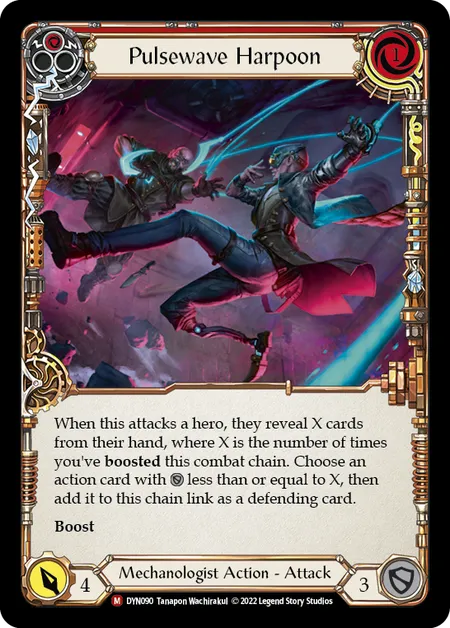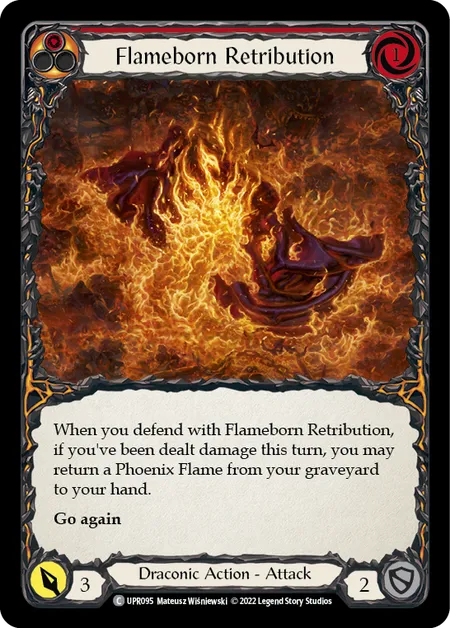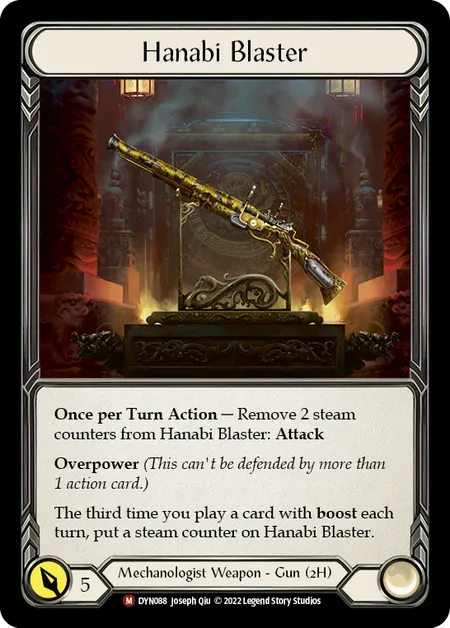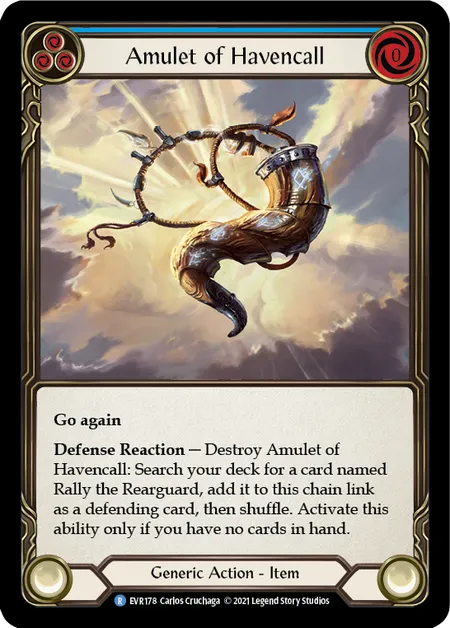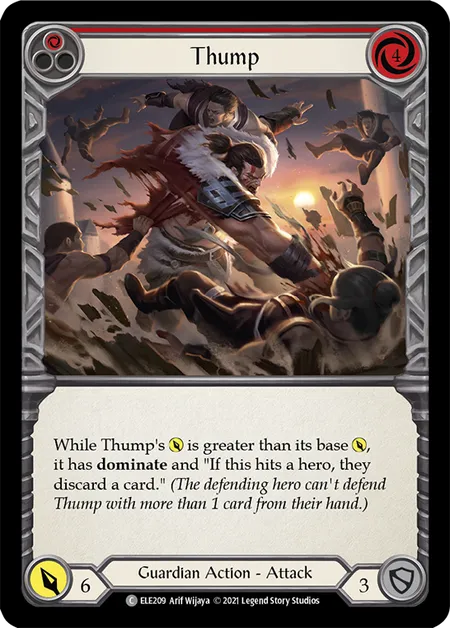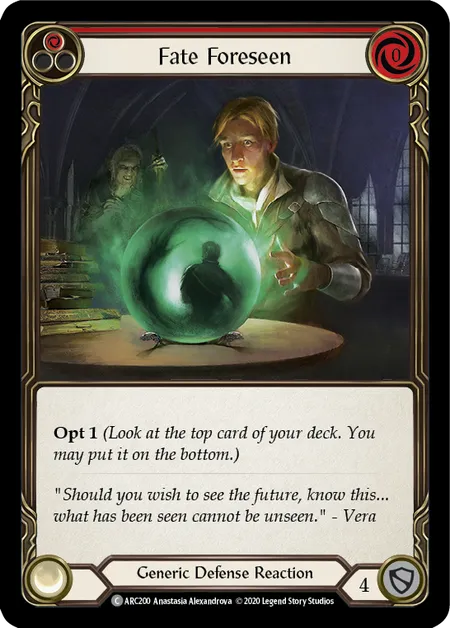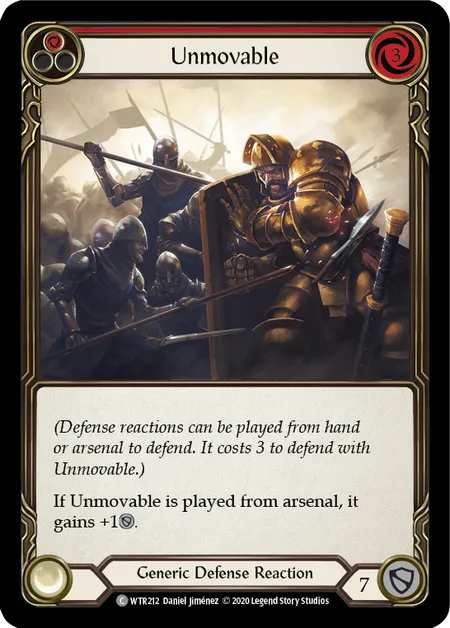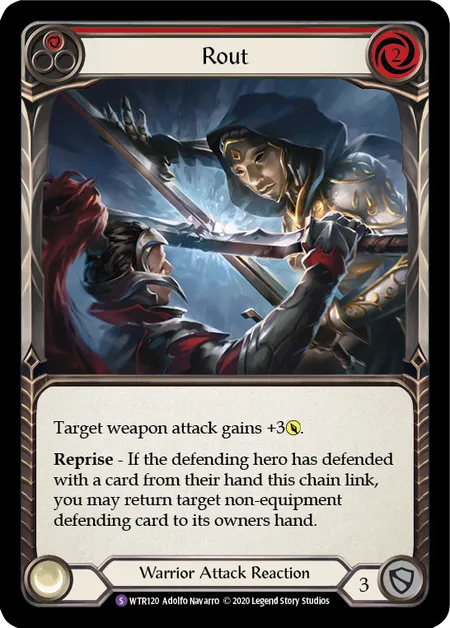With the upcoming release of Dusk till Dawn, comes an update to the rules and policy documents, as well as changes that aim to refine the rules of the game. As we add more cards and effects to the collective pool, it's necessary to continue to address and monitor edge cases and educate players about the niche interactions that change potential lines of play. In this article, we explore and discuss the nuanced changes to defending - a critical aspect of the Flesh and Blood experience.
Heads up - we use the term “defend” a lot in this article.
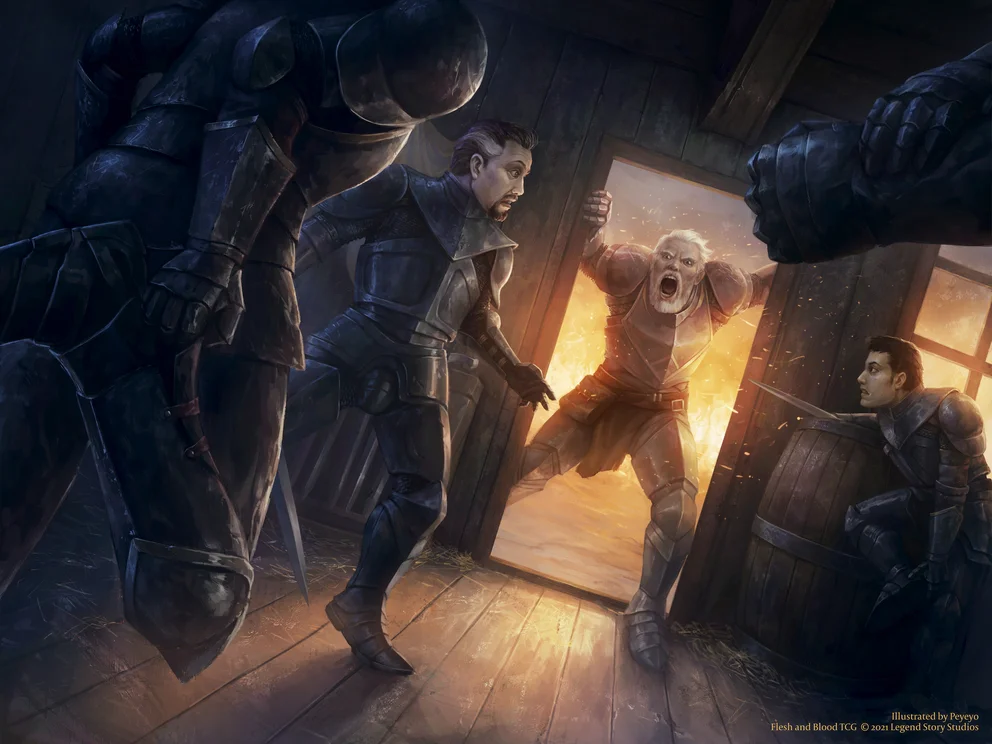
What does it mean to defend?
Previously, defending (verb) referred to the act of declaring defending cards as the defending hero during the defend step of combat, or when a defense reaction resolves on the stack and becomes a defending card. This excluded effects that added cards to a chain link as defending cards.
As of the release of Dusk till Dawn on 14th July 2023, any time a card is added as a defending card to the chain link, it counts as defending with that card. This means that regardless of how the card would be added to the chain link, it will trigger on-defend effects (e.g. “when this defends”).
Tyler has boosted twice this turn. Tyler attacks Nic with Pulsewave Harpoon, boosting. Nic reveals their hand and Tyler chooses to add Flameborn Retribution to the chain link as a defending card. Because Flameborn Retribution has become defending, it triggers and resolves, and Nic may return a Phoenix Flame from their graveyard to their hand.
In addition, effects that prevent cards from defending will prevent cards from being added as defending cards, regardless of how they would be added. In particular, if an effect would be prevented from adding a card to a chain link as a defending card, then that part of the effect fails (other parts of the effect may still resolve).
Tyler attacks Nic with Hanabi Blaster. Nic defends with an action card from hand. During the reaction step, Nic activates and resolves Amulet of Havencall, and finds a Rally the Rearguard in their deck. Because an action card is already defending against Hanabi Blaster, the Rally the Rearguard can not defend against the Hanabi Blaster, so it fails to be added as a defending card and remains in the deck. The deck is then shuffled to resolve the remaining effect of Amulet of Havencall.
Unifying “dominate” with other anti-defend effects
In addition to changing the definition of defending with cards, we will be functionally updating dominate with the following reminder text:
Old:
Dominate (The defending hero can't defend with or play more than 1 defending card or defense reaction from their hand this chain link.)
New:
Dominate (This can’t be defended by more than 1 card from hand.)
While there are many reasons behind this update to the dominate keyword, the primary one is to unify dominate with overpower and future effects that affect game rules that govern defending. The aim is to help with the intuitive understanding of interactions and reduce the verbosity of reminder text on cards.
With this change, there are four simple principles to remember that govern how cards are prevented from defending against an attack with dominate or similar “can’t be defended” effects:
- A player can not declare a defending card (defend step) if the card can not defend against the attack.
- A player can not play a defense reaction card (reaction step) if the card can not defend against the attack.
- A defense reaction on the stack will fail to resolve (essentially negated) if it can not defend against the attack.
- A card will not become a defending card (from an effect) if it can not defend against the attack.
This change means that it’s possible to have multiple unresolved defense reactions on the stack (played from hand) which get “negated” upon resolution because they can not defend the attack. Specifically, there currently are two possible situations where this may occur:
- The attack has dominate. The defending hero doesn't defend, then during the reaction step, they play a defense reaction from hand and immediately play another defense reaction from hand before the first one resolves. In this case, only the last defense reaction card will resolve and become defending, and the first defense reaction card will fail to resolve because the attack is already defended by a card from hand.
- The attack does not have dominate. The defending hero defends with a card from hand. During the reaction step the defending hero plays a defense reaction from hand. Before it resolves, the attacking hero gives their attack dominate. In this case, the defense reaction card will fail to resolve because the attack is already defended by a card from hand.
Tyler attacks Nic with Thump. Nic defends with one card from hand. During the reaction step, Nic plays Fate Foreseen, but before Fate Foreseen resolves Tyler plays and resolves a Pummel. Thump gains dominate before Fate Foreseen resolves, and because Thump is already defended by a card from hand, the Fate Foreseen can not defend against Thump, so it fails to resolve and is cleared from the stack. Nic does not Opt 1 from the Fate Foreseen and Fate Foreseen is put into the graveyard.
Revisiting "reprise", and the curious case of Rout
To clear up any ambiguity regarding reprise, the condition is met when a card has, at any point, been added as a defending card to the chain link from the defending hero’s hand. This means that regardless of how the defending card is added to a chain link, the owner/controller of the card is considered to have defended with that card. While interactions currently exist only in hypothetical games of Ultimate Pit Fight (particularly with Yorick, Weaver of Tales), it's important to establish this precedence for future cards that could exist.
Finally, a reminder that if a card has been added to, then removed from, the combat chain as a defending card from hand, the reprise condition is still met because it’s based on the history of defending on the chain link rather than the current state of defending cards. This is unchanged from existing reprise functionality.
Rout
Rout is one of the few cards in the game that can actively remove defending cards from the combat chain. It is important to note how this effect interacts with reprise and dominate (and similar effects).
Specifically, as mentioned before, reprise is conditional on the defending hero having defended with a card from hand at any point, while dominate and similar effects dictate whether a card can defend based on the current defending cards on the combat chain.
Previously with Rout and dominate, if the attacking player were to resolve Rout and remove a defense reaction that was played from hand on the current chain link where dominate is active, the defending player was unable to play another defense reaction from hand to that same chain link. However, due to these changes to dominate, the defending player would now be able to play that defense reaction (or a different one) from hand in this same scenario, provided there are currently no other defending cards from hand on the chain link.
Tyler plays and resolves Ironsong Determination, then attacks Nic with Dawnblade. During the reaction step, Nic plays and resolves Unmovable (from hand). Tyler plays and resolves Rout, returning the Unmovable to Nic’s hand. Tyler then plays and resolves Ironsong Response, which gives Dawnblade +3 power because Nic defended with a card from hand, even if that card is no longer defending on the current combat chain. Finally, Nic plays and resolves the same Unmovable from hand because dominate would not prevent Unmovable from defending, since there are no other defending cards from hand on the active chain link.
